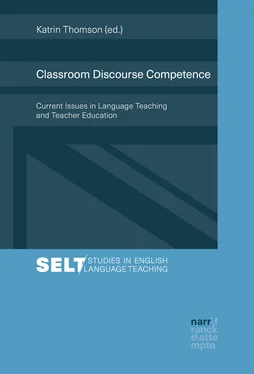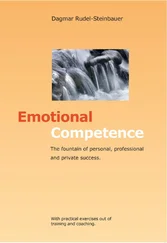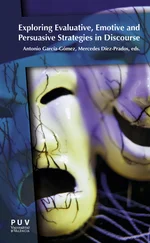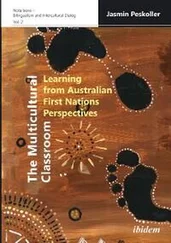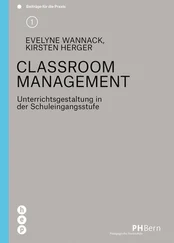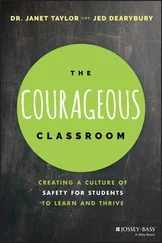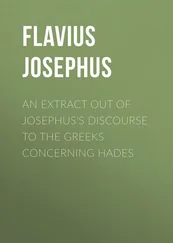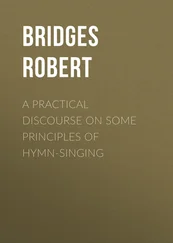The seven chapters in the third section ( Part III – Practical Approaches to CDC Development in Pre-Service Teacher Education) present a variety of digital tools and resources as well as field-tested seminar modules and course concepts, all of which have been designed to foster prospective teachers’ CDC. The contributions in this section provide valuable insights into the practical work of TEFL teacher educators at university level, which may serve as inspiration for teacher educators and/or teacher trainers in similar settings. What is more, these contributions demonstrate that CDC development at pre-service stage has recently received somewhat greater attention – be it in the context of single seminar sessions, supervised school placements or full-fledged TEFL courses that are dedicated entirely to fostering student teachers’ CDC.
Addressing the issue of technologically and digitally supported teacher education, René Koglbauer, Jon Hainesand Paul Seedhouseintroduce the Video Enhanced Observation (VEO) app. The authors explain how the app works, describe its features and illustrate ways of using the app in various contexts and phases of foreign language teacher education. Focusing particularly on the observation and analysis of classroom discourse and teacher talk, the video-recorded classroom data may serve as a basis for critical self-reflection and a constructive, professional dialogue between observed (pre-service) teachers and their teacher educators. Drawing on the concept of reflective practice, Koglbauer and his co-authors argue that using video-recordings of student teachers’ own teaching experience in post-lesson analysis and discussion provides valuable opportunities for systematic, structured and focused reflection-on-action as observed teachers do not have to rely on their memory but can relate to empirical evidence of their actual teaching practices in language classrooms.
Karen Glaserintroduces the reader to a videography research project on classroom discourse competence (CDC) which primary school TEFL students conduct in the context of a school internship module. Glaser describes the general structure and objectives of her students’ research projects and, on the basis of two select student samples, illustrates how specific videography assignments on teachers’ instruction-giving and feedback behavior respectively can foster students’ analytical and reflective skills with regard to classroom discourse phenomena in the EFL primary school classroom. Referring to the positive outcome of these videography assignments, Glaser concludes that small-scale research projects on classroom interaction, teacher and student talk – if preceded or accompanied by university TEFL seminars/lectures – can foster student teachers’ classroom discourse competence and raise classroom discourse awareness.
Holger Limbergdiscusses the potential of classroom corpora in EFL teacher education at university level. Focusing on primary school education, he argues that a qualitative approach to lesson transcripts increases student teachers’ professional knowledge and leads to a deeper understanding of how EFL primary school teachers implement the principles and methods of FLT in classroom discourse. Limberg uses transcript samples from the Primary English Classroom Corpus (PECC) to illustrate how analyzing and discussing authentic spoken discourse can foster prospective teachers’ awareness of discourse patterns in primary school language education. Classroom corpora, Limberg points out, are a valuable tool for EFL teacher professionalization as they provide student teachers with opportunities to explore specific aspects of classroom discourse, analyze patterns of use and discuss how teachers’ verbal actions may affect student learning.
In a similar vein, Olaf Jäkelalso focuses on the use of classroom corpora in language teacher education. Drawing on transcript data from the author’s own classroom corpus (FLECC), Jäkel provides detailed analyses of year 5 lesson transcripts. He ‘revisits an old acquaintance’, as the author himself puts it: the IRF exchange structure, which has attracted much scholarly interest for decades both in Applied Linguistics and in foreign language education research. The IRF pattern has also been at the centre of much critical debate. On the one hand, the IRF exchange structure has been criticized not only for rendering classroom discourse monotonous, mechanical, and predictable, but also for minimizing opportunities for genuine communication in language classrooms. On the other hand, it has been noted that in certain lesson contexts its use can support students’ language learning (see also Limberg’s chapter). Jäkel returns to this particular discourse pattern in order to illustrate that the IRF structure can be used to serve multiple purposes (such as giving form- and content-focused feedback, expressing appreciation of learner contributions, incorporating repair work), provided that EFL teachers are aware of these different functions. Taking transcript analyses of IRF sequences as an example, Jäkel emphasizes the merits of using authentic classroom discourse corpora and – like Limberg – pleads for an increased use of such data in university TEFL seminars.
Gabriele Blelland Friederike von Bremendescribe the purpose and design of the VirtU learning module project in which student teachers of TEFL observe, analyze and discuss video vignettes recorded in authentic EFL classrooms. Aiming to promote prospective teachers’ reflective competence with regard to classroom discourse, the core component of this project lies in the use of tailor-made educational resources (tasks and guiding questions for video analysis and reflection). In their chapter, the authors explain the theoretical and conceptual underpinnings of their task designs and then present two specific samples which focus on different teacher tasks in L2 classroom discourse: giving instructions and hosting a class discussion.
Having made classroom discourse competence one of her major scholarly concerns not only in research but also in practical EFL teacher education at pre-service stage, Katrin Thomsonpresents ClaDis – a course concept which she designed and implemented at university level to foster student teachers’ CDC. Drawing on key concepts which presently inform language teacher education (including the construct of teachers’ professional knowledge, professional vision, data-led classroom research and reflective practice), Thomson explains the complex theoretical underpinnings and conceptual framework of ClaDis . First presenting the three pillars which form the foundation of ClaDis (knowledge—reflection—practice), Thomson then shows what specifically each of these pillars entails in terms of actual course work and TEFL students’ competence gains. In her chapter, she incorporates selected extracts from two student teacher samples (by Anna Bichlmaierand Chiara Ballmann-Noukra) in order to illustrate the potential of this course concept to effectively and sustainably contribute to the development of CDC in the context of initial teacher education. Bichlmaier transcribed a self-selected video vignette and analyzed the teacher’s instruction-giving while teaching 9 th-grade students (‘other-data’). Ballmann-Noukra transcribed and analyzed a video-recorded micro-teaching sequence (simulating a lesson lead-in in 12 thgrade) which she had prepared and subsequently taught in one of the ClaDis seminar sessions (‘self-data’). With the intention of giving greater recognition to students’ course work and achievements, both students were invited by the author to publish the written accounts of their individual course assignments as online supplements to this chapter. Full-length versions of their papers are accessible via the publisher’s website ( www.meta.narr.de/9783823383741/Zusatzmaterial.zip).
Читать дальше
